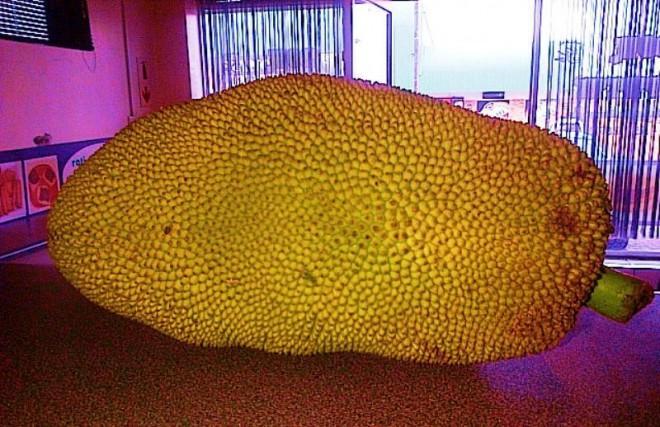But don't be fooled: The fruit, known as a jackfruit, is being hailed as a "miracle" crop that could save millions from starvation. And the unique fruit inside of it is just the beginning of the jackfruit's many wonders.
Jackfruit is the largest tree-borne fruit in the world — one fruit can weigh between 10 and 100 pounds and contain hundreds of seeds that are rich in protein, potassium, calcium, and iron — all of which are important for bodily growth.
This enigmatic fruit is native to South and Southeast Asia; it is rare to find jackfruit in the US. Luckily, Chinatown in Manhattan sells whole, fresh jackfruit. To get a first-hand look at this leathery, prickly food, Business Insider trekked from the Flatiron district to Chinatown where we spotted a jackfruit being offered by one of the many street vendors. The vendor was selling it for $2.50 per pound.
It is common to purchase freshly sliced jackfruit by the pound, but we were on a mission to learn everything we could about this monster fruit, so we bought the whole, uncut 10 pounds of it.
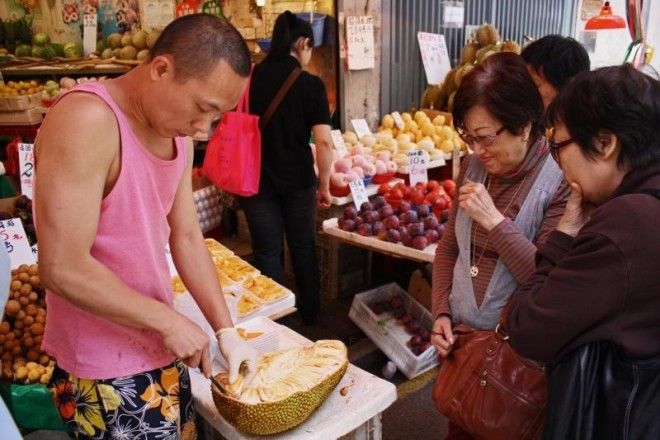
Two women in Hong Kong purchase some fleshy lobes of Jackfruit as a man extracts them from the fibrous shell. Here's more about the strange but beneficial fruit.
'It's a miracle'
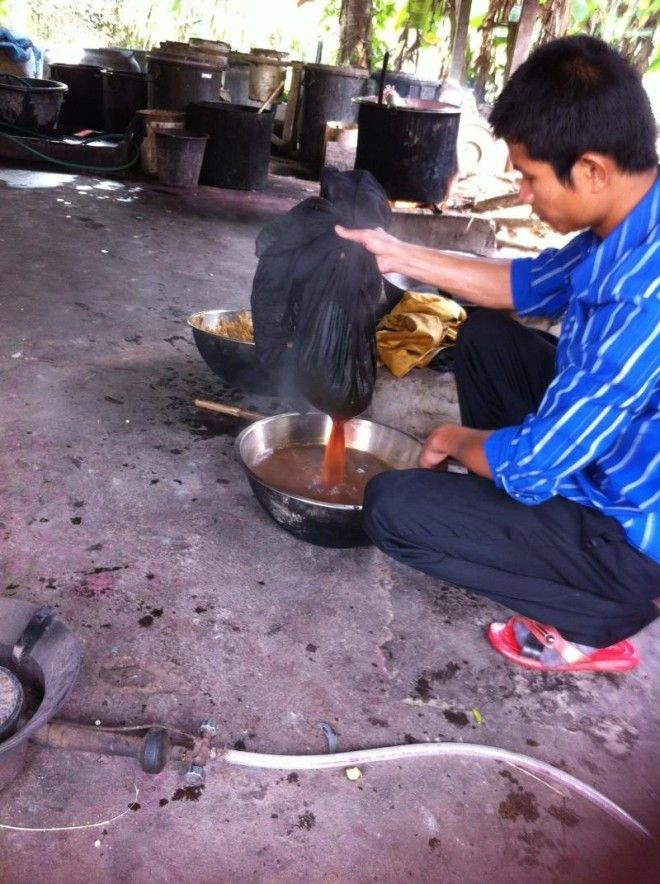
Nyree Zerega is a plant biologist at the Chicago Botanic Garden who has studied the genetic diversity of jackfruit tress in Bangladesh.
"In Bangladesh, where jackfruit is the national fruit, it is often considered the second-most important crop after mangos," Zerega told Business Insider.
"And if you have space to grow something, you almost always have a jackfruit tree — due to both its valuable fruits and timber."
Besides food, the jackfruit tree provides some of the following:
- The leaves from jackfruit trees can be a source of food for goats and other farm animals.
- The bark has an orange color, shown in the picture to the right, that was traditionally used as a dye for monk's robes.
- The trees produce a sticky latex substance that can be used as glue.
- Wood from the trees can be sold or used as timber.
A single jackfruit can yield hundreds of the small, yellow, fruit lobes (or bulbs) — each of which contain a highly nutritious seed. The fruit itself is a good source of Vitamin C, while the seeds are rich in protein, potassium, calcium, and iron. About one-fifth of a pound of the fruit has approximately 95 calories.
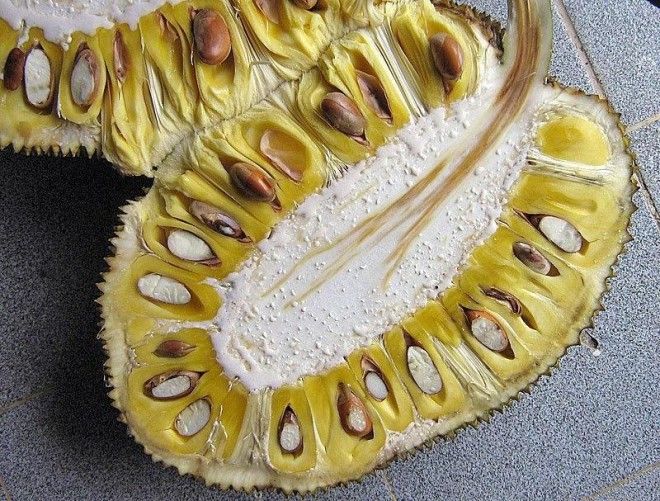
"It's a miracle. It can provide so many nutrients and calories – everything," Shyamala Reddy, who is a biotechnology researcher at the University of Agriculture Sciences in Bangalore, India, told The Guardian earlier this year.
"If you just eat 10 or 12 bulbs of this fruit, you don't need food for another half a day."
Dry it, fry it, juice it, BBQ it — just don't let it go badA single fruit could feed your family for an entire meal, Zerega told Business Insider. That's partly due to its size, but also because of the many different ways that people have learned to prepare the jackfruit. It can either be eaten ripe, when it is soft, fruity, and delicious, or unripe, when it resembles a potato.
In Bangladesh and other parts of Southeast Asia, jackfruit is served in dozens of ways. Jackfruit curry, stir fry, juice, chips, ice cream, and even baking flour — made from drying and grinding the seeds or fruit — are just a few examples of jackfruit’s remarkable versatility in the kitchen.
However, jackfruit does not keep for more than a few weeks after harvest, Zerega said, so a good way to preserve it (if you're not going to make a jackfruit feast like the one in the photo below) is to store it in cans or dry it out into chips.
Here’s a table displaying over a dozen different styles of jackfruit preparation:
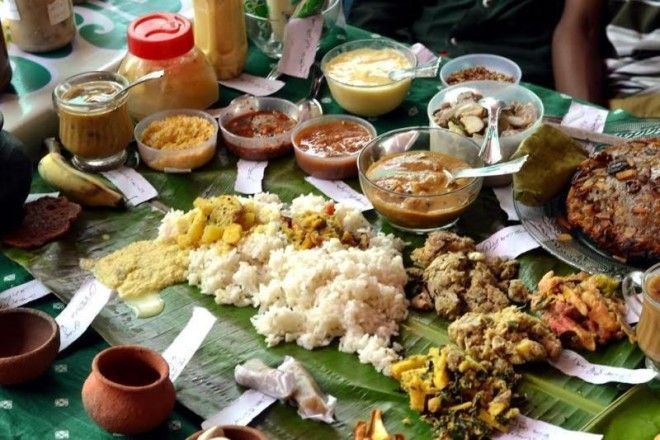
Though jackfruit is still widely unknown in the US, it is cropping up in the vegan and vegetarian communities because of the flavor that unripened jackfruit adopts after an hour or so of cooking, which resembles that of pulled pork.
A growing movement
While millions of households in Vietnam, Bangladesh, Malaysia, and elsewhere across South and Southeast Asia are incorporating the jackfruit into their dishes, India remains reluctant.
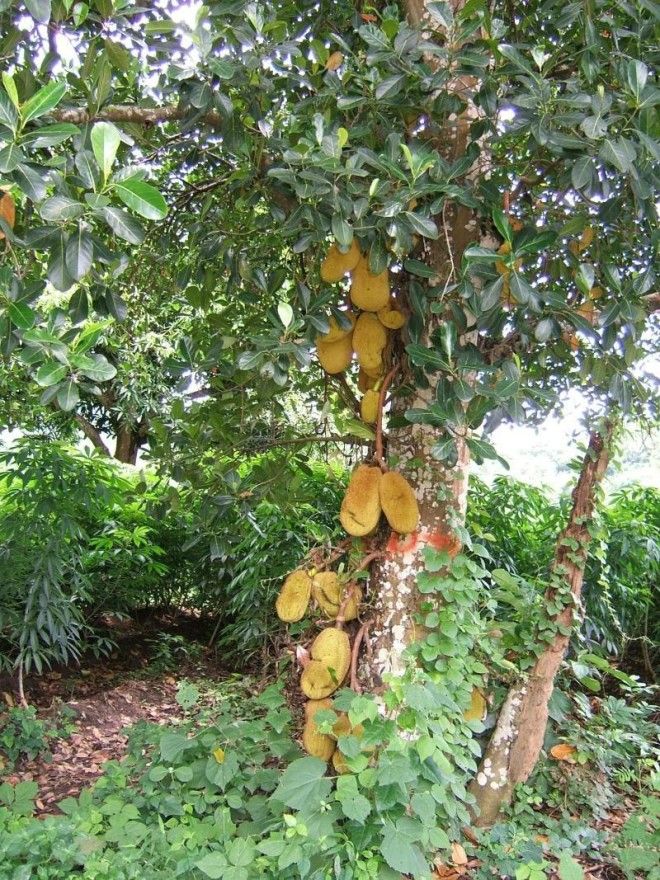
Reportedly, up to 75% of jackfruit grown in India goes to waste, partly because the fruit goes bad if it's not eaten or preserved within a few weeks.
But more than that, jackfruit has a bad reputation to overcome.
"Historically, jackfruit has a reputation for being a poor man's fruit," Zerega said. "It's not the kind of thing that many people would ever think of buying because it grows everywhere in certain parts of India."
Fortunately for the fruit, it has a growing number of fans advocating for it, trying to raise awareness for its nutritional value.
"My country is silently allowing [the] lion’s share of our jackfruits to rot," Shree Padre, who lives in the Indian state of Kerala, told Business Insider in an email. "This disturbed me."
Padre is the editor of a 27-year-old Indian magazine called "Adike Patrike," and over the last six years he has orchestrated 16 issues dedicated to the jackfruit. Padre also helps organize jackfruit festivals in India.
"Countries like Vietnam, Philippines, and Malaysia are minting money from jackfruit. Sri Lanka proudly calls it [the] 'tree of rice,'" Padre said. "But ironically, in [the] motherland of jackfruit, we still haven’t understood jackfruit's importance."
The future of jackfruit in IndiaBecause of its versatility, Padre estimates that farmers in India could earn about $151 per jackfruit tree because of all the different products you can make with its bark, fruit, natural latex, and more.

"It has five raw materials in one," he said. "No other crop of the world will come near to the number of products and recipes that can be made from jackfruit."
One jackfruit tree could bring in more than half the average monthly income for an Indian worker, which is $295, according to the International Labor Organization. (The average American monthly income is $3,236.)
What’s more, jackfruit trees are generally easier and cheaper to cultivate than other popular staples like wheat and corn because they don't have to be replanted every year, Zerega said.
"As long as it's growing in a climate that is conducive to its survival ... jackfruit is relatively easy to maintain," she told.
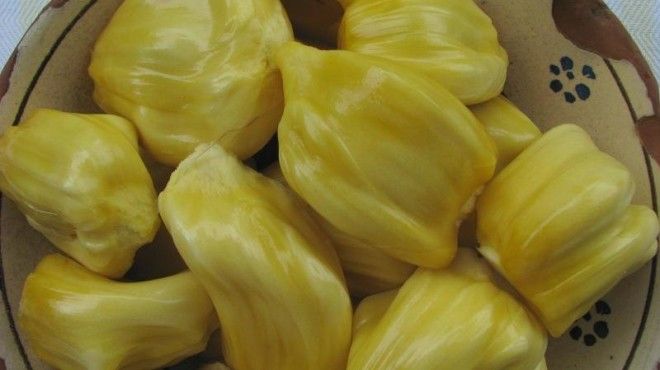
However, for India, making a business out of selling jackfruit like the Vietnamese have done will be difficult, at first, which is why Indian locals should first focus on eating the fruit Zerega says that harvesting and processing jackfruit is currently very laborious with little mechanization, and while farming and exporting jackfruit could grow to be a lucrative business for India in the future, it is also important to focus on it as a valuable food source within the country.
"A lot of underutilized crops like jackfruit have a ton of potential to produce food more locally and more sustainable, so there's not as much reliance on imports from other countries. This local market development is important to focus on," Zerega said. "But ultimately they can also provide countless opportunities as valuable export products."
